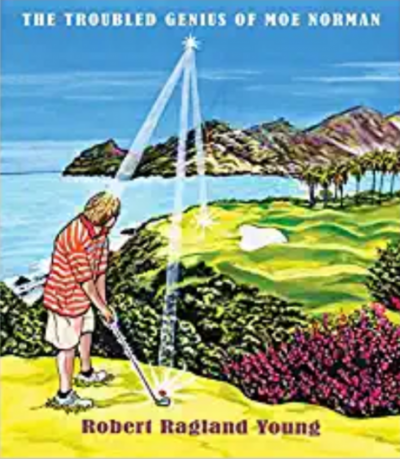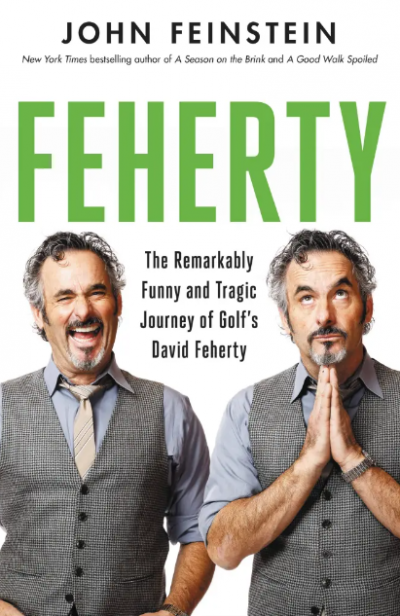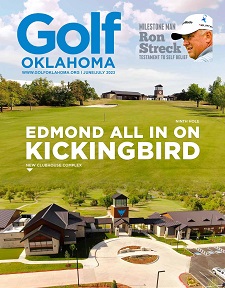It’s hard to imagine more disparate reading experiences than the trio of books before us this time out, touching on the semi-mystical, the highly technical, and the deeply personal.
 Robert Ragland Young’s Mind Golf: The Troubled Genius of Moe Norman (Savio Republic, $17.99), hovers in the first category. Young, now 81, spent parts of the last four decades of the previous century pounding out hundreds of thousands of golf balls with the legendary Norman, either in their native Canada, or down in Florida in the winter months.
Robert Ragland Young’s Mind Golf: The Troubled Genius of Moe Norman (Savio Republic, $17.99), hovers in the first category. Young, now 81, spent parts of the last four decades of the previous century pounding out hundreds of thousands of golf balls with the legendary Norman, either in their native Canada, or down in Florida in the winter months.
Said to be the purest striker of the ball ever, one of two who, according to Tiger Woods, “owned their swing” (Hogan the other), Norman was perhaps less troubled than diagnosable somewhere along the autism spectrum. Others said his social awkwardness and peculiarities may have stemmed from a sledding accident when he was five. Or perhaps a combination of both, suggested Lorne Rubinstein in his biography of Norman, Moe & Me.
Whatever the case, Norman’s career was circumscribed by his idiosyncrasies; he sometimes preferred not to participate in tournaments lest he win and have to face interviewers. Nonetheless, he won two Canadian Amateurs, more than 50 Canadian Tour titles, made two trips to the Masters, and was inducted into the Canadian Golf Hall of Fame in 1995. He died in 2004, at 75.
Young is an interesting character himself. He’s the brother of musician Neil Young, and who knew Neil Young grew up in a golfing family and played himself? All confirmed here by a forward written by Neil. Bob Young, a member of the Canadian PGA for decades, unfurls dozens of Norman stories in his book, a compendium of notes he made over the decades as the pair of them would hit out hundreds upon hundreds of balls each day.
As for technique, this is where things get a little mystical. Young suggests he’ll reveal all as the book goes all, and maybe he does, but it’s all a little oblique. It boils down to the psychic skill of visualizing the apex of the shot-to-be, and then simply allowing that shot to unfold. Well, maybe it’s not that simple, and maybe others can interpret Young’s advice more pellucidly. In any case, this odd little book (about the size of a large scorecard), is certainly engaging enough in its intrigue and anecdotes.
<<<>>>
 Richard Mandell’s Principles of Golf Architecture (T. Eliot Press, $35) is a recondite read in its own right, but only because the author, a course designer and member of ASGCA, does such a deep dive into the subject matter. Mandell formats the book into eight chapters on the “Elements of Design” (Line, Space, Shape, Form, Texture, Color, Scale and Nature) as well as 27 chapters on the “Principles of Design.”
Richard Mandell’s Principles of Golf Architecture (T. Eliot Press, $35) is a recondite read in its own right, but only because the author, a course designer and member of ASGCA, does such a deep dive into the subject matter. Mandell formats the book into eight chapters on the “Elements of Design” (Line, Space, Shape, Form, Texture, Color, Scale and Nature) as well as 27 chapters on the “Principles of Design.”
He proceeds to offer a profusion of examples in each chapter with a generous selection of photos and drawings, many from his own course projects, but others as well. It’s heady stuff, probably best suited for the serious golf architecture student, with its text book-like material. Actually, for the serious golf architecture student, I’d call it required reading.
For the more casual fan of golf design—about where I would place myself—it’s a bit of an intellectual struggle, no easy ride. Still, I made it all the way through, and have to admit that the next round I played after finishing had me looking at the home course with a more analytic eye.
I’ve not had the pleasure of playing an original Mandell course or one of his restorations or renovations, but the desire is certainly there now. He’s done more than 75 projects in the U.S. and abroad, drawing on his early appreciation of design while sneaking onto the Rye Golf Club in New York with friends and playing a few holes before being chased off.
He’s now based in the Pinehurst area, and I think it’s safe to peg him as a traditionalist, seeking to have the land dictate the nature of his layouts, with an aim toward strategic rather than penal golf. He clearly reveres classic tracks and efforts from the so-called Golden Age architects.
Mandell is not above calling out what he deems dubious design practices—gimmicky, overly penal, repetitive, oblivious to natural land forms and so on—but unlike, say, Tom Doak’s Confidential Guide to Golf Courses, Mandell isn’t naming any names from the fraternity. Still, readers are free to infer.
Mandell’s prose is all in earnest; touches of humor are as rare, and valued, as an albatross. But he captions one of the last photos in the book, of his work on the third hole at the Blue, Army Navy Country Club in Arlington, Virginia thusly: “Note to reader: If at anytime you see this creek covered up in the next century, go ahead and open it back up for me. Thanks.”
<<<>>>
 Anyone who has ever watched golf tournaments on TV knows who David Feherty is. But for cave-dwellers, John Feinstein’s Feherty: The Remarkably Funny and Tragic Journey of Golf’s David Feherty (Hachette, $30) will fill in any blanks.
Anyone who has ever watched golf tournaments on TV knows who David Feherty is. But for cave-dwellers, John Feinstein’s Feherty: The Remarkably Funny and Tragic Journey of Golf’s David Feherty (Hachette, $30) will fill in any blanks.
Feinstein is a book-writing machine, 45 at this count, including The First Major and The Prodigy. He can always be counted on for richly anecdotal narratives buttressed by what appears to be excellent sources.
In this case, what amounts to Feinstein for a fairly brisk account (a mere 244 pages!), his primary source this time out is the horse’s mouth. Feherty clearly acceded to countless interviews; Feinstein thanks him three times in his acknowledgments (where he actually seems to go on and thank everyone he has ever known).
So if you want to know Feherty’s tale, this is the place to go. It is quite the story arc—a lad who grew up among the Troubles in Northern Ireland, became besotted with golf, works at his game to become an accomplished professional (including a role on Europe’s 1991 Ryder Cup team—the War By the Shore Ryder Cup), and after his playing career becomes a perhaps even more accomplished television personality at tournaments and in his Golf Channel show, “Feherty.”
That’s the cursory outline. The texture is more gritty, as Feherty has continuously battled with bipolar disorder and alcoholism. He struggled through a disastrous first marriage, was saved by his second (while nonetheless putting his wife, Anita, through the wringer), and was ravaged by the death of a son, Shey, to his own addiction problems. Feinstein covers all this unblinkingly, with input from all involved—Feherty family members, fellow players, broadcast colleagues—and it’s certainly not a pretty picture.
But there’s ample redemption, too. Tom Watson, who battled his own alcohol problems, plays a key role in coming to Feherty’s aid. But all who come to know Feherty seem to come to love him for his warmth, humor, kindness and generosity. He has done a great deal for veterans; indeed, he decided to become an American citizen after a revelatory USO trip to Iraq to entertain troops. And did. He says he now unabashedly pulls for the U.S. team in Ryder Cup matches.
 He won’t be doing any announcing during them, however. Feherty agreed to an offer he couldn’t refuse to throw in with the LIV league, and like Harold Varner III, didn’t try to embroider his rationale for signing up—it was all about the money. A happy ending? Part of the deal appears to be resurrecting the “Feherty” interview show, so we’ve got that going for us.
He won’t be doing any announcing during them, however. Feherty agreed to an offer he couldn’t refuse to throw in with the LIV league, and like Harold Varner III, didn’t try to embroider his rationale for signing up—it was all about the money. A happy ending? Part of the deal appears to be resurrecting the “Feherty” interview show, so we’ve got that going for us.
This piece originally appeared in the June-July 2023 issue of Golf Oklahoma in slightly different form.
